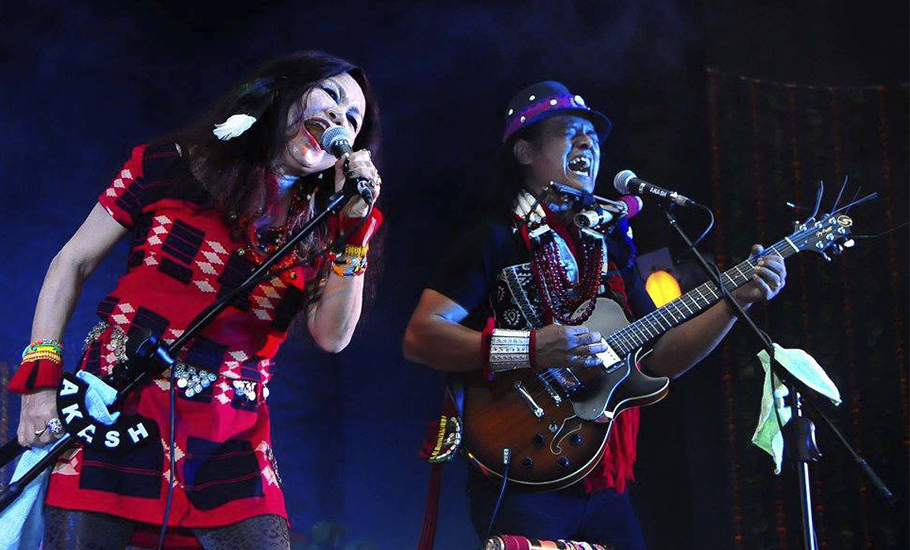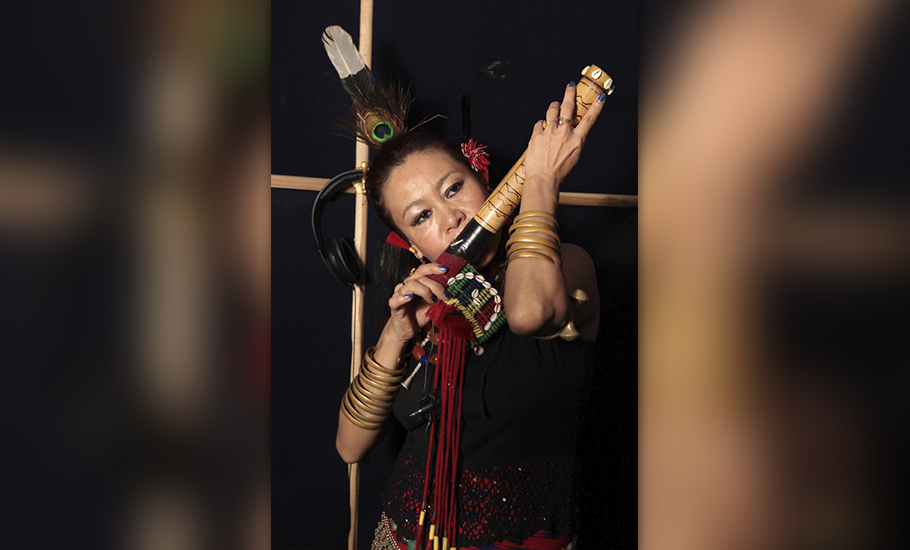
- Home
- India
- World
- Premium
- THE FEDERAL SPECIAL
- Analysis
- States
- Perspective
- Videos
- Sports
- Education
- Entertainment
- Elections
- Features
- Health
- Business
- Series
- In memoriam: Sheikh Mujibur Rahman
- Bishnoi's Men
- NEET TANGLE
- Economy Series
- Earth Day
- Kashmir’s Frozen Turbulence
- India@75
- The legend of Ramjanmabhoomi
- Liberalisation@30
- How to tame a dragon
- Celebrating biodiversity
- Farm Matters
- 50 days of solitude
- Bringing Migrants Home
- Budget 2020
- Jharkhand Votes
- The Federal Investigates
- The Federal Impact
- Vanishing Sand
- Gandhi @ 150
- Andhra Today
- Field report
- Operation Gulmarg
- Pandemic @1 Mn in India
- The Federal Year-End
- The Zero Year
- Science
- Brand studio
- Newsletter
- Elections 2024
- Events
- Home
- IndiaIndia
- World
- Analysis
- StatesStates
- PerspectivePerspective
- VideosVideos
- Sports
- Education
- Entertainment
- ElectionsElections
- Features
- Health
- BusinessBusiness
- Premium
- Loading...
Premium - Events

From rock riffs to Padma Shri: How Naga folk won over a rock 'n' roll heart

It is not uncommon for musicians to dabble in different genres, but it is rare for a veteran rock musician to receive the fourth highest civilian award for his efforts to popularise folk music. And on April 5, when musician, actor and activist Moa Subong received the Padma Shri award in Art for his distinguished contribution to folk music of Nagaland at Rashrapati Bhawan, he probably became...
It is not uncommon for musicians to dabble in different genres, but it is rare for a veteran rock musician to receive the fourth highest civilian award for his efforts to popularise folk music. And on April 5, when musician, actor and activist Moa Subong received the Padma Shri award in Art for his distinguished contribution to folk music of Nagaland at Rashrapati Bhawan, he probably became the first in this regard.
“Rock and folk are two sides of the same coin and when astutely fused together, the end product can be very satisfying. That’s the beauty of folk-rock,” believes the 62-year-old, who was heavily into rock and roll before getting the “call” to revive native folk. And today, after 18 years of toiling to popularise the latter, Subong has invented a new musical genre, produced films around it and has also designed an indigenous wind instrument from bamboo.
Also read | Live audio engineers amp up the sonic boom in North East
Until 2005, Subong’s preferred genre of music wasn’t folk-rock. He and with his wife, Arenla, were packing venues as a duo belting out good ol’ rock and roll. By then, the guitar player’s admiration for his native folk music was mostly confined to a lick or two in a couple of original rock pieces and his tryst with howey music was yet to occur.

“In 1989, while recording an album at Studio Vibration, Kolkata, the then regional manager of Magnasound, Shashi Menon, approached us and insisted to release our album under the label. Backed by Shiva, a well-known rock band back then, we recorded Rapture making it the first English album by an Indian artiste to be released by the label. Next year, Magnasound made us tie up with 5th Dimension of Kolkata for an east India tour to promote the album,” says Subong.
During the tour, of all the things the duo learned, the need to have a permanent band topped the priority. “Shiva was based out of Kolkata and we were from Nagaland. Distance became the biggest hurdle as we couldn’t meet at will and our rehearsals got a hit. That’s when we decided to have our own band with musicians from Nagaland,” he says.
Initially, Abiogenesis was an out-an-out cover band with popular sets swarmed with hits from Aerosmith and Deep purple. “But as we musically matured and delved deep into our roots, we discovered the instant connection with Naga folk music. And it was in 2005 when we found nirvana in the form of howey music,” he says.
A fusion of chants, hymns and expressions of the various Naga tribes with modern musical sensitivities, howey music is a genre developed by Subong and Arenla. It garnered global recognition after three out of the band’s four studio albums were listed for nominations in the prestigious Grammys. “We dig out the best of yesterday, blend it with the best of today and create a new sound for tomorrow. That’s what howey is about. Today, we play only original howey music,” says Subong.
Also read | Ziro Music Festival 2022: Kochi rock to Nepali pop, 4 days of delighting the senses
Chants and hymns are an integral part of tribal dialects and howey’s genesis stems from the ones in Nagaland. “Since time immemorial, various Naga tribes have been using unique vocal elements from their respective dialects in folk songs. These chants and hymns give them energy to go about their day-to-day chores and pump them up during celebrations. We pull the catchy ones out from these folk songs and fuse them with rock musical sensitivities. It’s like really old wine in new bottle,” he says.
Considering Nagaland is home to several ethnic tribes with their respective dialects, it wasn’t easy for Subong to create the perfect blend of Naga folk-rock. “We had to be very careful not to hurt anyone’s sentiments. So, the drill is to do thorough research before choosing a particular chant or expression for our fusion songs,” explains Subong.
The art of fusing folk with rock may seem like an industrious job, but thanks to a common trait that binds the two, their co-existence in compositions isn’t jarring. “Most folk music from around the world is based on the pentatonic scale (or commonly, the blues scale). And, majority of rock music draws its inspiration from the blues as well. So, musically, it’s somewhat easier to fuse rock and folk,” explains Subong. Today, Abiogenesis brand of music is not folk but folk-fusion that bents towards rock. “We mix our folk with various forms of modern rhythms, and of course we do have a tendency to lean towards rock as we grew up listening and playing the genre,” says Subong.

For Abiogenesis, the advent of a new genre demanded a characteristic sound. The band needed an indigenous instrument that could accentuate howey’s essence and is also in line with Naga traditional instruments. After months of trial and error, Subong ingeniously invented the bamhum. “The instrument derives its name from the two basic elements used in its making — bamboo and humming,” says Subong. Made out of bamboo, which is readily available in the tropical rainforests of the region, bamhum is a simple instrument. “It can be played even by a novice,” adds Subong.
Bamhum was unveiled by the then Governor of Meghalaya, MM Jacob, at the International Bamboo Festival in Shillong on May 3, 2005, and almost instantly, Abiogenesis’ sound experienced a paradigm shift. “Bamhum became the leading instrument of the band. With Arenla driving the lead in it and me complementing her with the harmony, our sound found its signature. The bamhum’s unique, indigenous tone blended perfectly with howey and it made our music stand out,” says Subong.
The love for Naga folk and the turbulent times that the Naga society was going through inspired the band to focus on spreading awareness about issues such as HIV/AIDS, insurgency and rampant drug abuse. “When Abiogenesis was formed, many musicians in Nagaland were into narcotics; they were like the ‘living dead’. So, we decided to combat drug abuse through music. The name of our band, Abiogenesis, states our mission – to reactivate the dead cells. We have written songs such as Saramati Tears and Magic of Love, among many others, that appeal for a harmonious society,” informs Subong, who also has a documentary highlighting the ills of drug abuse in the state to his name.
Subong knew that howey, with its distinct roots in indigenous Naga culture and urban appearance, had the spark to shine. So, the guitar player didn’t limit the genre to only music and activism but started looking for novel ways to further its reach. The idea to create musicals around howey was borne out of his love for theatre and films and with Arenla, an already established theatre personality as his wife; the duo quickly put their thoughts into action.
“Arenla is the one who got me into theatre and films. She has several awards as a theatre artiste to her name and that inspired me to contribute as well. Till date, we have produced two howey musicals – Lichaba’s Daughter and Enter My World. Lichaba’s Daughter, based on Ao folklore, was selected and screened at Days of Ethnographic Cinema Festival in Moscow in 2012, while Enter My World was selected in the Echo BRICS Film Festival 2021 (Echo BRICS FF). All the movies are written and directed by Arenla,” he informs. Apart from shouldering the editing duties in these musicals and contributing with music, Subong also donned the hat of an actor in Lichaba’s Daughter.
Today, Subong is a key figure in Nagaland’s music festival circuit and has been encouraging young and dynamic musicians to foray into playing folk-inspired music. But there is a challenge that has been somewhat pulling Naga folk music back, he believes. “Western music and culture has caught the frenzy of today’s Naga youth. To an extent that’s okay, but going all out to embrace it, isn’t right. Instead of rooting for Westernisation, I would want the youth of my state to opt for modernisation; something what the Koreans, Japanese or Chinese have been doing. Our state and culture have some unique features that deserve to be known; for instance, our folk music. If the youth decide to incorporate these elements in their music, I am sure they will draw a lot of attention. Along with passion and talent, the youth needs perseverance and zeal to reap positive dividends from them,” the TED talker tells The Federal.

Receiving the Padma Shri for his efforts to popularise Naga folklore is a significant boost that has bolstered Subong’s commitment to the genre. At the age of 62, the artiste wants to do as many live gigs as possible and believes there is still opportunity for greater greatness. “We have come a long way and it has been a satisfying journey. But there is a lot that needs to be done and there will always be room for improvement. I feel the youth has finally understood the significance of their roots and today, are striving to incorporate traditional folk elements in their music in a bid to stand out. That’s a start!” he says.
